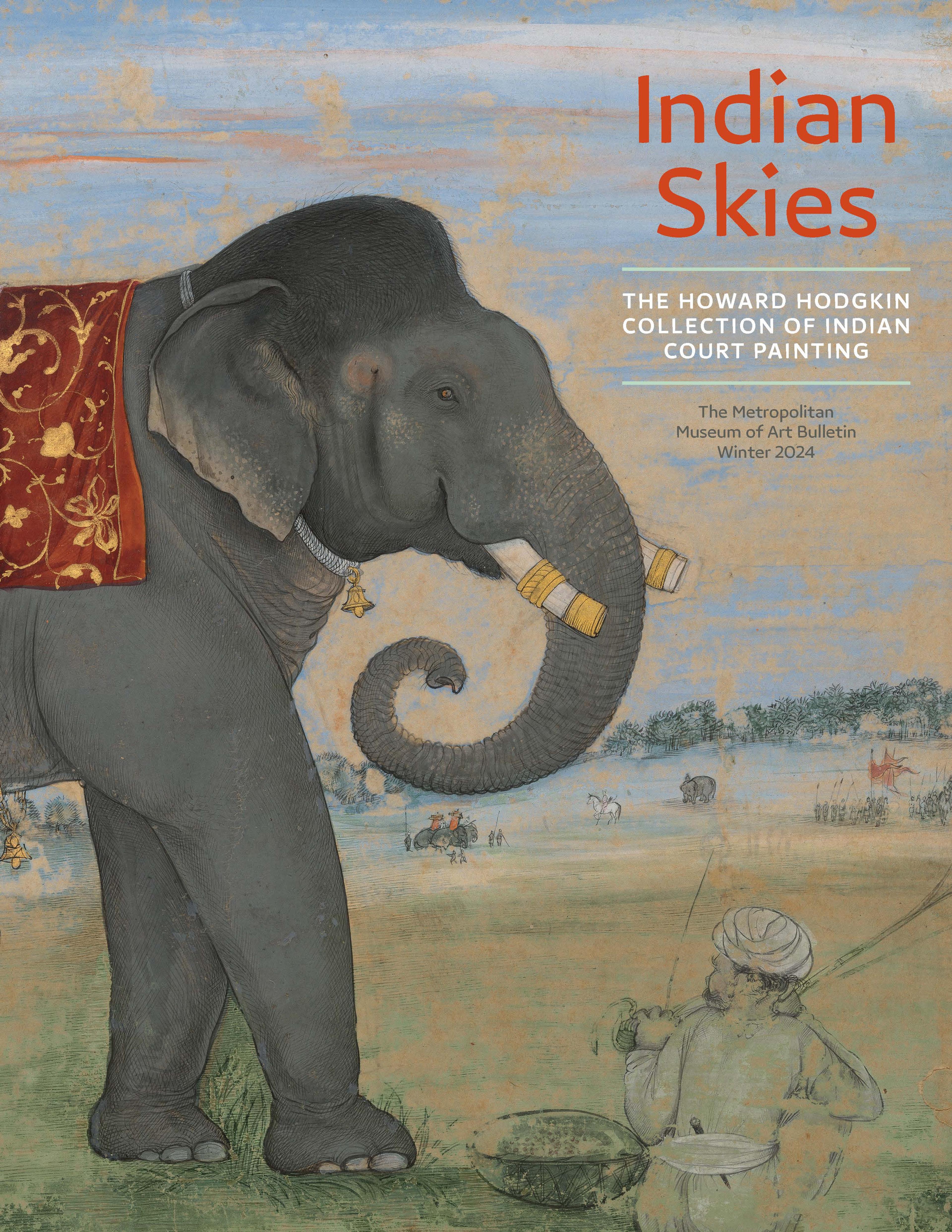The Elephant Hunt
Capturing elephants for the royal herd was an essential part of Indian court life. Here the artist captured all the drama, and dangers, of such hunts in a composition read as a continuous narrative. As female members of the herd and their calves bathe in the swirling waters of a pond, the bull, sensing danger, charges through the bamboo grove to attack the pair of trained elephants with mahouts (keepers) shown at lower right. Above, the bull races to escape the trained elephants driving him into the trap, but a noose has been slipped over his head by the hunters wearing foliage camouflage; waiting in the treetops ahead is another hunter with a massive rope secured to the tree. Writing in the 1590s, Abul Fazl, the Mughal emperor Akbar’s biographer, provided a first-hand description of such hunts in his chronicle Ain-I Akbari, signaling the importance of this activity in court life
Artwork Details
- Title: The Elephant Hunt
- Artist: Attributed to Niju
- Date: ca. 1730–40
- Culture: India, Rajasthan, Kota
- Medium: Opaque watercolor and gold on paper
- Dimensions: Image: 18 × 20 1/4 in. (45.7 × 51.4 cm)
Framed: 24 × 26 1/8 × 1 1/8 in. (61 × 66.4 × 2.9 cm) - Classification: Paintings
- Credit Line: Howard Hodgkin Collection, Purchase, Gift of Florence and Herbert Irving, by exchange, 2022
- Object Number: 2022.217
- Rights and Reproduction: Image © Ashmolean Museum, University of Oxford
- Curatorial Department: Asian Art
More Artwork
Research Resources
The Met provides unparalleled resources for research and welcomes an international community of students and scholars. The Met's Open Access API is where creators and researchers can connect to the The Met collection. Open Access data and public domain images are available for unrestricted commercial and noncommercial use without permission or fee.
To request images under copyright and other restrictions, please use this Image Request form.
Feedback
We continue to research and examine historical and cultural context for objects in The Met collection. If you have comments or questions about this object record, please complete and submit this form. The Museum looks forward to receiving your comments.
